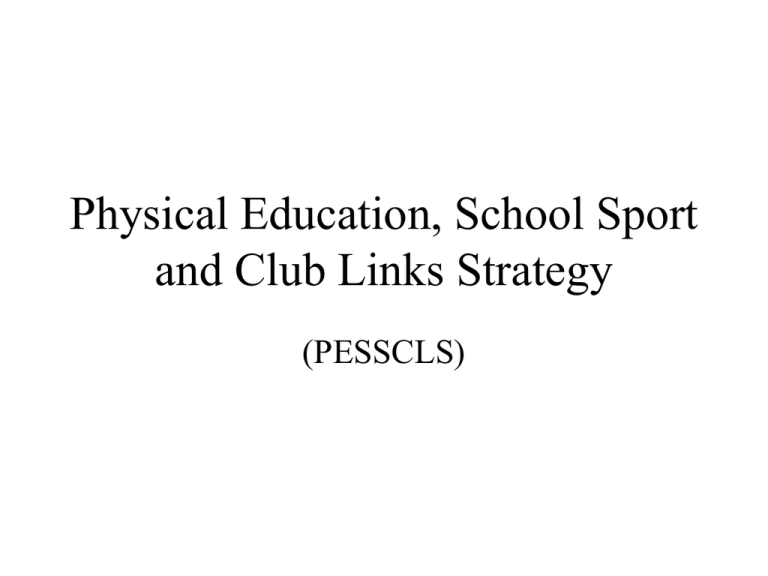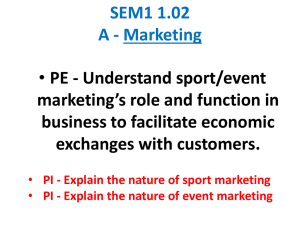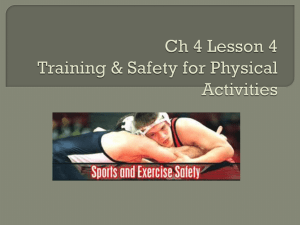Physical Education, School Sport and Club Links Strategy
advertisement

Physical Education, School Sport and Club Links Strategy (PESSCLS) Physical Education, School Sport and Club Links Strategy is a joint Department for Culture, Media and Sport (DCMs) and Department for Education and Sport (DfES) to implement a national strategy for PE and school sport. What are its aims? The aim is to enhance the take-up of sporting opportunities of 5 to 16 year olds so that the percentage of school children in England who spend a minimum of two hours each week of ‘high quality sport’ within and beyond the curriculum increases. The Eight Components of the PESSCLS Specialist Sports Colleges A Specialist system is being created in which every secondary school has its own special ethos and works with others to spread best practice and raise standards School Sport Partnership Families of schools that come together to enhance sporting opportunities for all. They are made up of one specialist Sports College, eight secondary school and approx. 45 primary or specialist schools Gifted and Talented Part of a wider strategy to improve gifted and talented education. Aims to improve quality of teaching, coaching and learning and raise aspirations, which will improve performance, motivation and self-esteem. Young people with potential will be encouraged to join junior sports clubs and develop links between NGBs and schools. QCA investigation The Qualification and Curriculum Authority is investigation the impact of ‘high quality sport and PE’ on schools that have undertaken the project. Many schools have seen wider benefits to the school including better attendance, better behavior, positive attitudes and higher self-esteem Step into Sport Sport relies on 1.5 million volunteer officials, coaches, administrators and managers. Step into Sport encourages children and young people to lead and volunteer Professional development In order to deliver high quality PE and sport,teachers and other professionals need training and to be able to draw resources Club Links To increase the proportion of children guided into affiliated clubs from the school sports coordinator Swimming I is statutory requirement that 805 of children should be able to swim 25 metres by the end of Key Stage 2. PE and sport in schools, both within and beyond the curriculum, can improve: • Pupil concentration, commitment and self-esteem, leading to higher attendance and better behaviour and attainment • Fitness levels: active children are less likely to be obese and more likely to pursue sporting activities as adults, thereby reducing the likelihood of coronary heart disease, diabetes and some forms of cancer • Success in international competitions by ensuring that talented young sports people have a clear pathway to elite sport and competitions whatever their circumstance. The project has eight sub-delivery programmes and is closely linked with a separate project to implement the recommendations of the Coaching Task Force.






